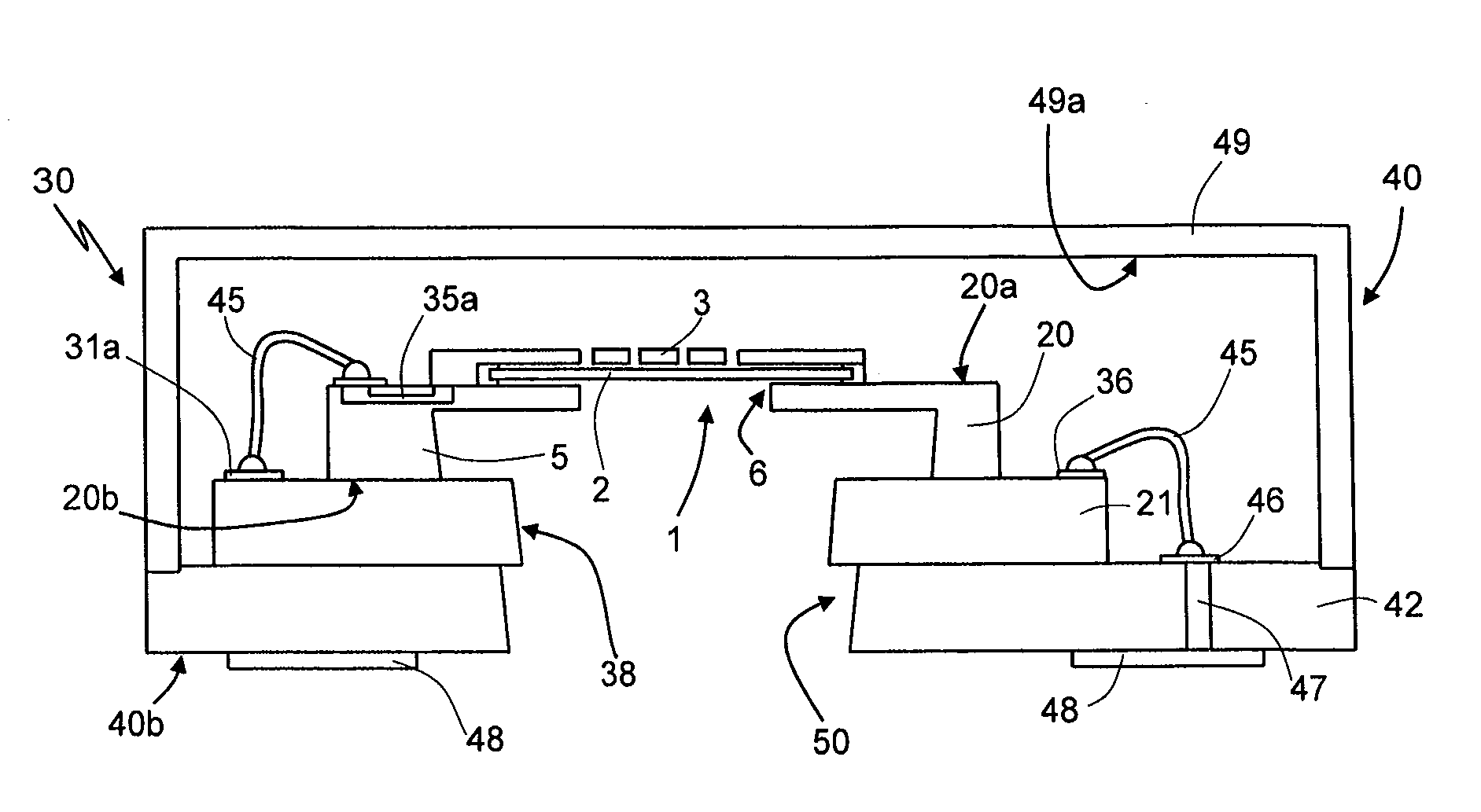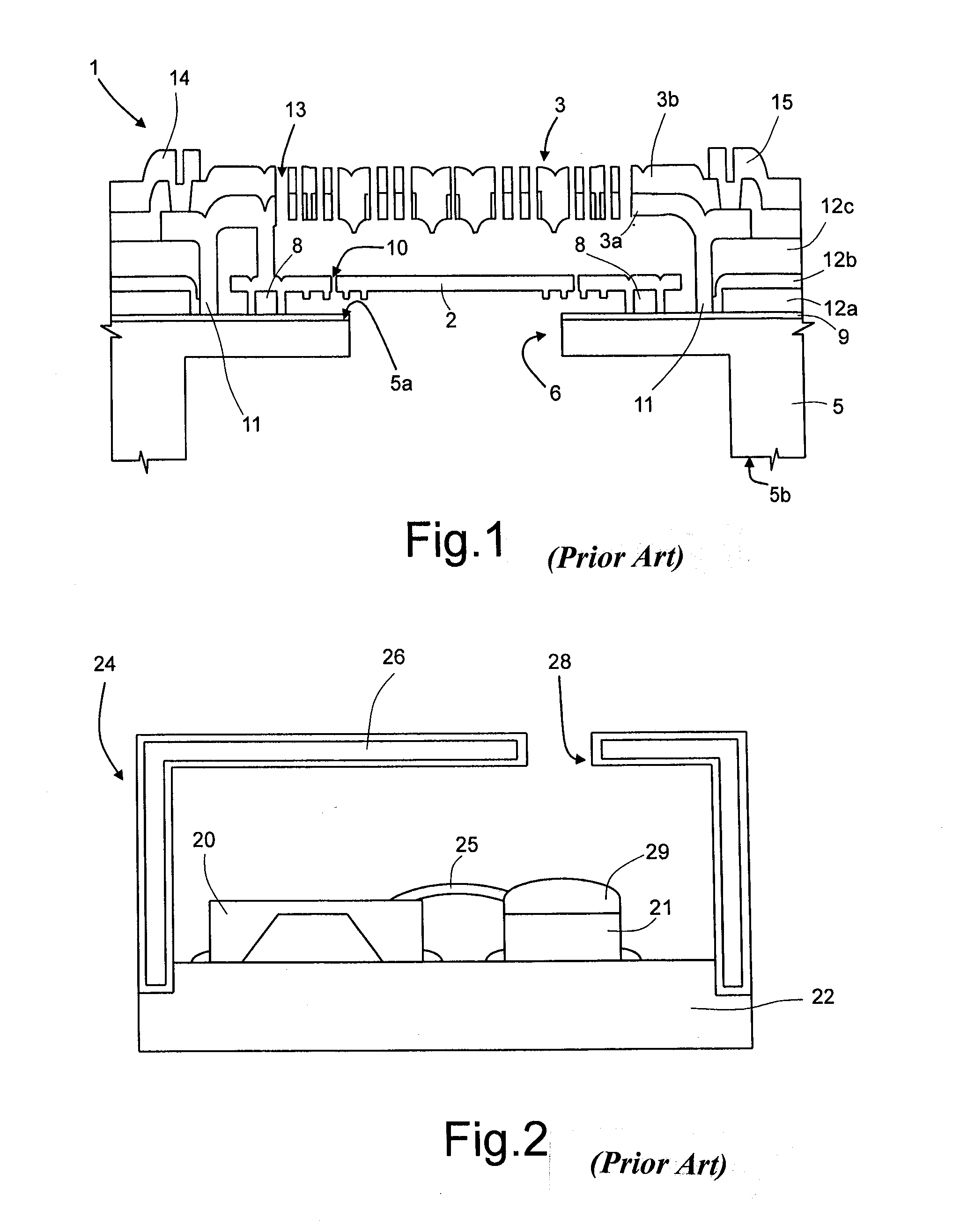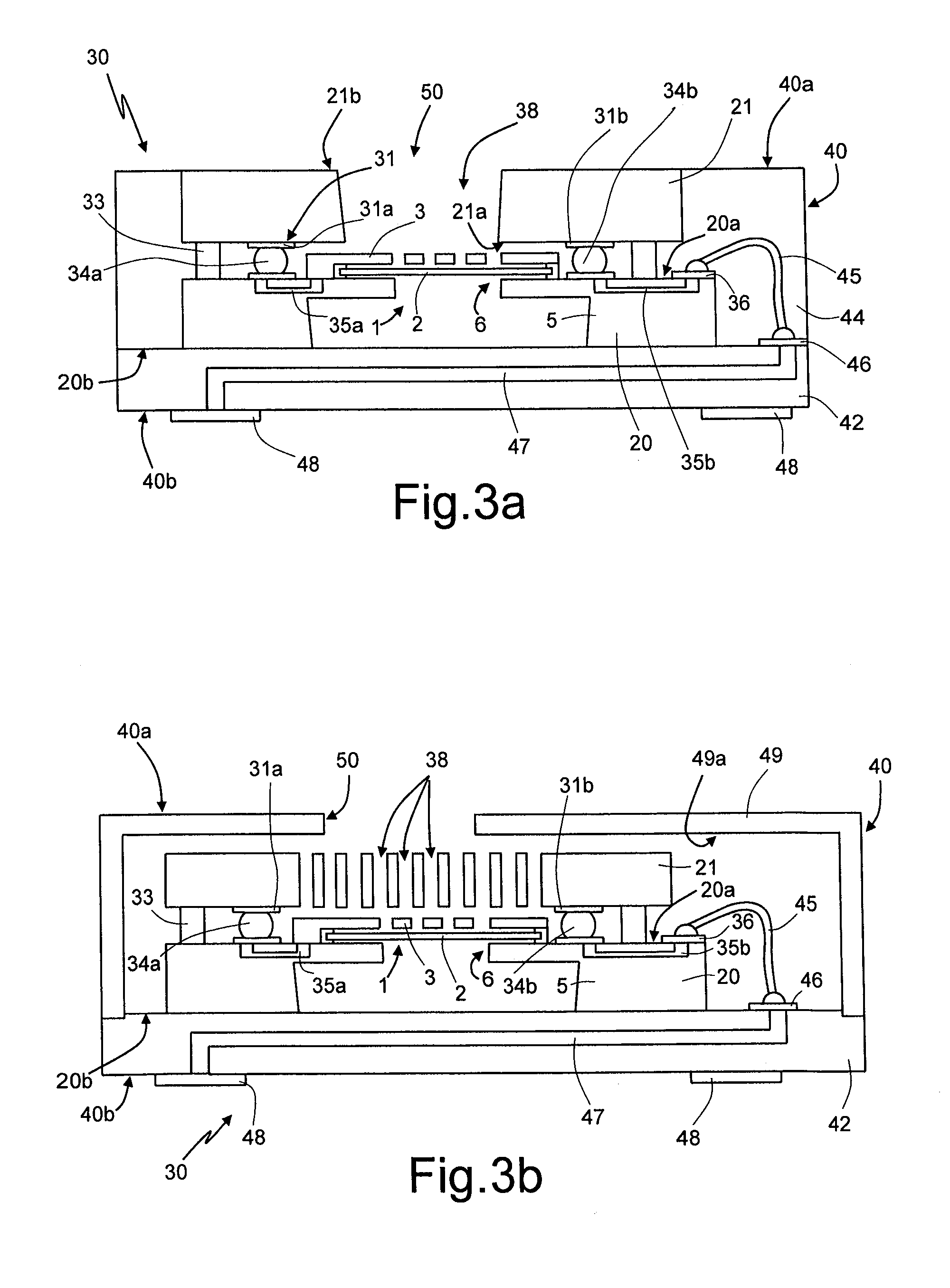Assembly of a capacitive acoustic transducer of the microelectromechanical type and package thereof
a capacitive acoustic transducer and microelectromechanical technology, applied in the direction of microphone structural association, semiconductor electrostatic transducer, loudspeaker, etc., can solve the problems of acoustic transducers that operate in unfavorable working environments, affecting the proper operation of the mems sensing structure and the reading of electronics, and the design of such devices is particularly problemati
- Summary
- Abstract
- Description
- Claims
- Application Information
AI Technical Summary
Problems solved by technology
Method used
Image
Examples
first embodiment
[0045]FIG. 3a shows the present disclosure, for a MEMS-capacitive-microphone assembly, designated by 30, of the top-port type, i.e., where the access port that enables entry of the acoustic-pressure waves is provided in a position corresponding to a top surface of the MEMS capacitive microphone (opposite that is, to the surface for coupling to an external printed circuit board, which carries for this purpose appropriate electrical contacts). In FIG. 3a (and in the subsequent figures) parts that are similar to others already described previously (not described again herein) are designated by the same reference numbers.
[0046]The first die 20, integrating the MEMS sensing structure 1 (illustrated schematically herein, and made, for example, as described in detail with reference to FIG. 1), is directly coupled (without, that is, interposition of further substrates or coupling dice) to the second die 21, integrating the ASIC that provides the reading electronics, to which it is electrica...
second embodiment
[0065]FIGS. 6a-6c show variants of the MEMS-capacitive-microphone assembly 30 and of the corresponding package 40, once again of the top-port type (it is emphasized that, also for this embodiment and for the subsequent ones that will be described, it may be conceived to provide, alternatively, a single through hole 38 or a plurality of through holes 38 through the entire thickness of the second die 21, even though this is not explicitly illustrated).
[0066]This second embodiment envisages further reduction of the dimensions of the package 40 and further improvement of the EMI-shielding performance, eliminating the interconnections via wire bonding between the assembly constituted by the first and second dice 20, 21 and the base substrate 42, and using, instead, for this purpose so-called “through silicon vias”51, provided (in a per-se known manner) through the entire thickness of the first die 20.
[0067]In particular, the through vias 51 connect in this case the second conductive bump...
third embodiment
[0072]FIGS. 7a-7b show variants of a third embodiment, corresponding to a MEMS capacitive microphone 30 of the bottom-port type, where, that is, the access port that enables entry of the acoustic-pressure waves is provided at a bottom surface of the MEMS capacitive microphone (in particular, the second outer face 40b, corresponding to the surface for coupling of the package 40 to an external printed circuit board). The acoustic access port 50 is in this case constituted by a through opening that traverses the base substrate 42 for an entire thickness thereof.
[0073]The first die 20 is stacked upside down (using the flip-chip technique) on the second die 21, with the necessary electrical and mechanical connections made using the bump-bonding technique. Once again, there are consequently present the first conductive bumps 34a, which electrically connect the first electrical contact pads 31a to the first buried electrical paths 35a. Also here the closing ring 33 is provided, made of met...
PUM
 Login to View More
Login to View More Abstract
Description
Claims
Application Information
 Login to View More
Login to View More - R&D
- Intellectual Property
- Life Sciences
- Materials
- Tech Scout
- Unparalleled Data Quality
- Higher Quality Content
- 60% Fewer Hallucinations
Browse by: Latest US Patents, China's latest patents, Technical Efficacy Thesaurus, Application Domain, Technology Topic, Popular Technical Reports.
© 2025 PatSnap. All rights reserved.Legal|Privacy policy|Modern Slavery Act Transparency Statement|Sitemap|About US| Contact US: help@patsnap.com



